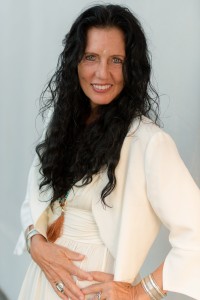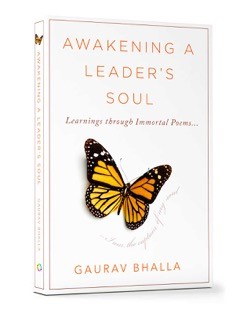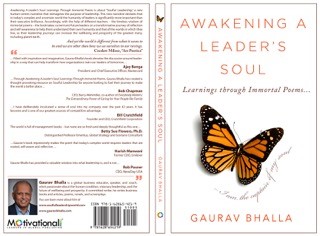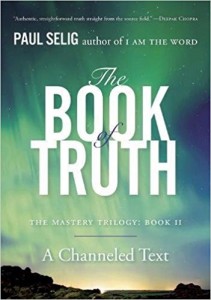The Narcissist’s Wake-up Call: How to Stop Narcissism from Ruining Your Life (and Everyone Else’s Too)
Are you a narcissist? Authors Greg Miller, Aaron Hill, and Jack Skeen say you owe it to yourself to find out. Here they share 11 common problems narcissists experience thanks to their destructive behaviors, along with exercises to help the truly self-involved build healthier habits today.
Hoboken, NJ (October 2017)—Narcissists are everywhere: in boardrooms across the country, in high school cafeterias, and, of course, online. From their diva-like behavior, never-ending monologues, and rants on social media, they are stirring up a narcissism epidemic. The worst part is, many narcissists spend years, lifetimes even, either unaware of their behavior or unwilling to change it. That’s why, according to Greg Miller—and there’s no easy way to say this—you might be a narcissist, too.
“If you’re preoccupied with being special and feeling superior to others, that’s narcissism,” says Miller, who along with Aaron Hill and Jack Skeen wrote The Circle Blueprint: Decoding the Conscious and Unconscious Factors that Determine Your Success (Wiley, October 2017, ISBN: 978-1-119-43485-6, $26.00, www.thecircleblueprint.com). “Narcissists exploit and manipulate those around them and have a high level of self-obsession, believing everyone wants to hear what they have to say.”
It’s not easy to live with, work with, or be friends with a narcissist, say the authors. But while you might assume it would be pleasant to have such a high opinion of oneself, it’s even harder to be a narcissist.
“Narcissists actually do a great deal of suffering, whether they realize it or not,” says Hill. “They can’t have meaningful relationships because they keep a cool distance and behave in ways that alienate others. They often have deeply wounded self-esteem, and they need constant validation to feel content.”
Even if you’re pretty sure you aren’t a full-blown narcissist, the authors urge you to check yourself, because you may well have some narcissistic habits that need curbing. Most people do!
No matter where you fall on the narcissism scale, from casual conversation interrupter to raging egomaniac, your life can improve by acknowledging your behavior and working to change it. In The Circle Blueprint, the authors discuss how narcissism is a major culprit in halting your personal development. The book is part of a larger self-improvement program called the Circle Blueprint System, which also includes workbooks and a confidential scientifically validated psychometric self-assessment. The self-assessment is free with the purchase of the book.
“You can find real happiness by repairing damaged relationships, accepting responsibility for your actions, and forging authentic bonds with the people in your life,” says Skeen. “Everyone can benefit from looking for traces of narcissism in their own behavior.”
Keep reading to learn about 11 classic narcissist problems you may be experiencing and some exercises to help you change your behavior and adopt healthier interpersonal habits:
PROBLEM: You believe you’re better, smarter, and more talented than those around you. This greatly impedes your ability to build healthy relationships at work and in your personal life. The sense of being very special, almost extraordinary, is common among narcissists. However, this is alienating to others and hurts your relationship with them.
EXERCISE: Make a list of people you feel you are better than. Now, make a list of people you view as better than you. If you find it much easier to list people toward whom you feel superior, you may begin to recognize how this belief has affected your life.
PROBLEM: You need constant attention from others. You may find yourself speaking louder than others, always talking about yourself, exaggerating your accomplishments, and boasting, all of which are ways to make certain you are noticed regardless of what is going on.
EXERCISE: Over the next few days, pay attention to how you interact with your peers and friends. Notice how much of the attention of others is focused on you and what you do to make that happen. Keep a list of some of the ways you seek and maintain attention.
PROBLEM: You hurt and disappoint others, and, over time, they lose trust in you. In order to have healthy relationships and be a productive leader or employee, people must be able to trust you. However, they can’t do this when you hurt them with your words or actions. This habit might not be an easy one to admit because it is likely not your intention to harm anyone; you dream big dreams and believe things will turn out just as you imagined. But, if you are honest, you will see that most of your dreams are about your success and not the success of others. Many times, people who trust you come to feel disappointed and burned. And over time, you damage relationships with people who cared for you and believed in you.
EXERCISE: Make a list of people who used to believe in you but now seem resentful. How can you repair these relationships? What can you do in the future to show others that you care about and value them?
PROBLEM: People avoid you, causing you to miss out on valuable partnerships. As people get to know you, they are more likely to indulge you and put up with you than to really enjoy your company. This might not be easy to see because people tend to be polite. But you might notice that people break away from conversation with you as soon as possible and rarely ask you to collaborate. If so, it’s likely that you are turning people off rather than building a group of people who support you. In an age where collaboration is crucial, this is a deadly weakness.
EXERCISE: For one week, observe whether or not friends, colleagues, and family members tend to avoid you. Note their behaviors and look for subtle signs that they are not as engaged with you as you would like them to be. Keep a record of your observations.
PROBLEM: You don’t learn from your mistakes. It is almost as if you are so committed to being special that you refuse to accept the feedback that you are not. You tend to repeat the same mistakes and minimize failure or explain it away as due to unusual circumstances. Further, you can’t accept dreams that are more normal-sized. Resistance to feedback cuts you off from the learning that you need in order to tame your narcissism and use your gifts in a more reasonable and profitable way.
EXERCISE: Make a list of feedback you have received numerous times but have not learned from. Ask yourself if you’re at risk of making the same mistake yet again. How can you break the cycle and start a healthier new pattern? What will you do differently this time?
PROBLEM: You can’t acknowledge or accept your weaknesses, and, therefore, you miss out on the benefits of being vulnerable. You like to demonstrate your strengths and hide your weaknesses. However, vulnerability draws people to you and makes you relatable. The truth is, being open and authentic about your narcissistic tendencies could actually help you. First, it shows others that you have awareness of your needs and so may be able to manage them. Second, it is a reminder for you to be aware of how your narcissism can get in your way.
EXERCISE: Practice vulnerability by admitting to others that you are a narcissist. Explain that this means that you believe you have special gifts, you have a need for feedback, and you are susceptible to being flattered. You will actually discover being vulnerable in this way becomes a source of strength and growth for you.
PROBLEM: You don’t pay attention to or listen to others, so you lose opportunities to connect and collaborate. Connecting with and acknowledging others isn’t just polite—it pays off. Listening to others can provide you with valuable insights, ideas, and contributions that could help you in business and life. And avoiding the input of those around you can open you up to making big mistakes. This may be the most difficult skill to master. To do this well, you will need to park your interest in yourself on the back burner and truly listen to the people who are close to you.
EXERCISE: Practice paying attention to the people in your life. Ask them questions about the things that matter to them: their dreams, concerns, and fears. Notice that you frequently want to interrupt them or follow something they said about themselves with a story about yourself. Hold back. Don’t talk about yourself. Listen and repeat back to them what you are learning about them. Try to avoid projecting your experiences on them and/or giving advice. By paying attention to others, you make room for people to draw closer to you and to support you better.
PROBLEM: You are unaware of your actual unique gifts. It is not enough that you feel that you are special and have unique gifts. You must learn precisely what those unique gifts are. Without that knowledge, you will be tempted to use every opportunity to show that you are gifted, even in areas where that might not be the case. As you come to understand your gifts, you can use them strategically. As you learn where you are special and where you are not, you can begin to focus your gifts in those places where you are most likely to be reliably successful.
EXERCISE: Write down exactly what you are most gifted to do. Now, list 10 things you shouldn’t attempt to do. Use this exercise to practice distinguishing between the two.
PROBLEM: You never affirm others for their gifts and talents. You tend to want affirmation much more than you are inclined to give it, but the people around you greatly value your feedback, and your affirmation helps them to understand the positive impact they are making on your life. If you don’t offer affirmation (or worse, constantly criticize), they feel taken for granted and perhaps even taken advantage of. And when this happens, they’re not motivated to help you or to do their best work. Nor do they like you.
EXERCISE: Practice speaking to people directly and openly, thanking them for what they are doing, pointing out the impact it is having and encouraging them to continue. Giving affirmation is far more important than receiving it, but it is also true that the more you give affirmation to others, the more likely it is that healthy affirmation will come to you.
PROBLEM: Your inflated self-confidence sets you up for failure. You enjoy believing that you can do whatever you put your mind to and that you have no limitations, and that belief supplies you with the courage to take on some big risks. But, occasionally, you overstep your capacity and put yourself in a position that leads to failure and disappointment. You don’t have the best judgment as to what is, and what is not, a reasonable risk. This lack of judgment can really cause you problems.
EXERCISE: Make a list of five decisions you have made that, in retrospect, you see were foolish. Do you recognize how this overestimation of yourself can get you into trouble?
PROBLEM: You feel good about yourself only when things are going well. When everything is great, you feel almost invincible, but when you lose the support of meaningful people, experience conflict, or encounter failure in some project, your self-confidence can plummet. When that happens, you can almost be immobilized by self-doubt and anxiety. This vacillation in your self-confidence can make it difficult to hold a steady course and be a great leader.
EXERCISE: List five times in your life when you have experienced a loss of self-confidence. What occurred that led to that loss?
“If it turns out that you display some narcissistic habits and behaviors, don’t lose hope,” concludes Miller. “These exercises are meant to be jumping off points that help you recognize how you got to this point. You have work to do, but with effort and determination, you can grow in leaps and bounds and repair damaged relationships. The key is being willing to change. If you can do that, a new life awaits you, in which you are known and even admired for being genuine, caring, and kind.”
# # #
About the Authors:
JACK SKEEN, PhD, is the founder of Skeen Leadership, an executive consulting firm. Skeen coaches successful leaders, addressing every imaginable leadership, business, and life issue with wisdom and professionalism.
GREG MILLER, PhD, is CEO of CrossCom, a technology services company. Miller has successfully led CrossCom to become a market leader through process efficiency, technology innovation, and rigorous execution.
AARON HILL, PhD, is the William S. Spears Chair in Business Administration at Oklahoma State University. He has authored a dozen articles appearing in the Financial Times Top 50 business journals.
About the Book:
The Circle Blueprint: Decoding the Conscious and Unconscious Factors that Determine Your Success (Wiley, October 2017, ISBN: 978-1-119-43485-6, $26.00, www.thecircleblueprint.com) is available at bookstores nationwide, from major online booksellers, and direct from the publisher by calling 800-225-5945. In Canada, call 800-567-4797. For more information, please visit the book’s page on www.wiley.com.
For more information, please visit www.thecircleblueprint.com.










 About the Author: Ilona Selke is an international bestselling author, seminar leader, lecturer, musician and CEO/cofounder of Living from Vision. Over 30+ years, Ilona has inspired thousands of people worldwide to discover the power of their consciousness and create a successful life. Her new book “Dream Big: The Universe Is Listening” offers real-life stories of transformation as well as practical tips anyone can use to shapeshift their lives from the inside out. For more information, visit
About the Author: Ilona Selke is an international bestselling author, seminar leader, lecturer, musician and CEO/cofounder of Living from Vision. Over 30+ years, Ilona has inspired thousands of people worldwide to discover the power of their consciousness and create a successful life. Her new book “Dream Big: The Universe Is Listening” offers real-life stories of transformation as well as practical tips anyone can use to shapeshift their lives from the inside out. For more information, visit  We live in an over-informed but under-transformed society. Books and seminars abound to help us find our way in this technology-laden world. We are oversaturated with information. But what our heart yearns for is not this, but the path of change deepens our heart and quickens our mind. Here, easy solutions rarely offer real help.
We live in an over-informed but under-transformed society. Books and seminars abound to help us find our way in this technology-laden world. We are oversaturated with information. But what our heart yearns for is not this, but the path of change deepens our heart and quickens our mind. Here, easy solutions rarely offer real help. Guest post by Gaurav Bhalla, Ph.D., author of “Awakening a Leader’s Soul, Learnings through Immortal Poems…”
Guest post by Gaurav Bhalla, Ph.D., author of “Awakening a Leader’s Soul, Learnings through Immortal Poems…”
 As people are living longer these days, you may have to take care of the senior in your family for a longer period of time. According to the “
As people are living longer these days, you may have to take care of the senior in your family for a longer period of time. According to the “